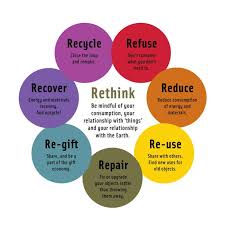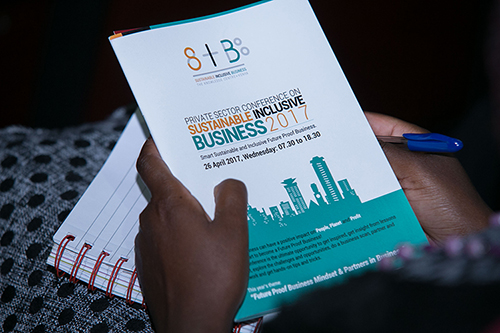“We want more products to be designed for longer lifetimes, ready to be disassembled, repaired and eventually recycled; with more companies keeping hold of valuable products and components through leasing, servicing, repair and resale” – Making Things Last Strategy.
Think about it, there is no destination in the world called ‘away’ – all waste ends up ‘somewhere’ on the planet and close to people. There is also no source of raw material independent from planet earth and from people.
Circular Economy focuses on changing the thinking from a traditional linear production cycle to a circular system. The possibility of this kind of an economy to thrive highly depends on how the people go about it: First by focusing on reducing natural consumption and exhausting the value of existing products then by rethinking material and products and redesigning business models.

1. Rethink & Refuse
It is possible to utilize fully biodegradable, renewable or recyclable/recycled inputs during production. It only takes rethinking and redesigning products; innovation & partnerships, research and design to find alternative material, alternative products and new business models.
Examples of rethink:
- Service Instead of Product: A business for instance does not need lightbulbs, they need light. A pay for use business model would take back the bulbs once they don’t work or would replace it with a more efficient innovation – therefore selling light instead of light equipment.
- Sharing platforms among product users that eliminate the need to buy more. For instance, on average, a homestead in the Netherlands will use a drill once a week for one hole in the wall yet every homestead owns a drill. What if, one drill was owned by the whole street and used on rotational basis?
- A big part of changing what businesses & consumers deem acceptable is letting manufacturers, companies and retailers know. Not only does refusing unnecessary items like disposable straws, plastic bags, and single-use cutlery reduce our consumption – it also sends a powerful message to those around you.
2. Reduce
Try to reduce the amount of the amount of material you use through efficiency measures and reduce the waste you produce, as this is the best way to start building a circular economy.
Maintain and repair instead of using and disposing for new ones, the reduction in demand will reduce the need for new manufactured products hence reduce the need for ‘fresh’ supplies; the manufacturer will then be tasked with more repairing and redesigning opportunities – refurbishing and remanufacturing.
3. Reuse
Reuse is different from recycling, although people often confuse the two. Recycling, while a good practice, uses a lot of energy and requires an industrial change to a product. This usually results in a new product of lesser quality.
Reusing a product, however, does not require major manufacturing manipulation. A reused object is simply put back to work, whether for its original purpose or not. Most material in any business can be used for a different purpose in the business or somewhere else. Thinking of how these materials can be used and redistributing them to relevant ‘users’ creates value out of your waste by making it some else’ raw material.
For instance:
- Encouraging buyers to bring back packaging for re-use (bags, boxes, plastic)
- Selling/Giving old but working computers to schools
- Using reclaimed material for building & furniture
Imagine and economy where today’s goods are tomorrow’s resources, creating a closed loop movement of resources: and thriving in a world of finite resources
4. Repair/Refurbish
- Repair: Restore something to good condition. This is an opportunity for manufacturers and designers to design for reparability. Think about standardization of spare parts, affordability and accessibility, consumer awareness to detect errors on time and repair before total destruction.
- Refurbishing: collecting discarded products or materials that can be refinished and sanitized to serve their original functions. Refurbishment is often aesthetic in nature and results in a product that, although in good condition, may not be comparable with new or remanufactured products.
5. Recycling
Recycling is a necessary component of a circular economy, though should only be considered when there are no other alternatives for re-use, remanufacture or repair. This is the basic premise of the waste hierarchy, which prioritises the most effective solutions to waste management.
Material recovery however is not limited to recycling, businesses can also upcycle or down cycle – of importance is that the value of materials is fully utilized.

